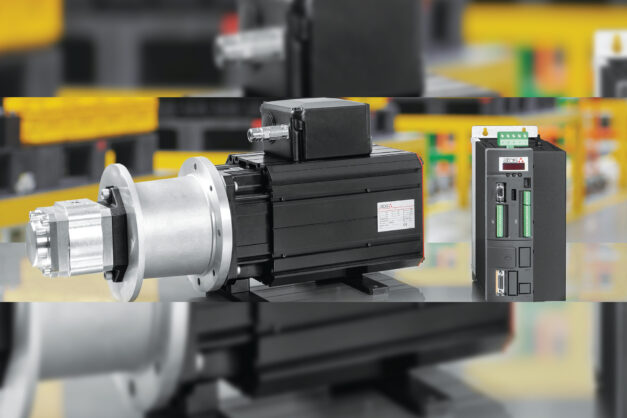The most efficient way to generate hydraulic power.
The focus on environmental pollution and the current escalation of energy prices is driving markets towards more efficient technologies and solutions. Atos provides the optimal response to market needs thanks to the range of energy-saving servopump with p/Q control, capable of saving up to 80 percent.
Energy saving servopump vs traditional systems
Traditional systems have an asynchronous motor that rotates constantly, generating pressurised oil even when the machine cycle does not require it. In contrast, a servopump delivers hydraulic power only in the quantity necessary to satisfy the work phase being performed. Comparative analyses performed on a 300-ton plastic injection moulding machine revealed that the SSP servopump’s energy consumption was lower than 80 percent compared to the fixed displacement pump, leading to annual savings of 75 MWh and 11,7 tons of CO2.
The Atos difference
The Atos R&D department has developed innovative features to give the servopump a simple experience.
Smart Start-up: The Smart Start-up feature greatly simplifies commissioning an SSP servopump. A quick and intuitive wizard configures, tests, and autotunes the servopump in three simple steps to obtain the best dynamic response.
Hydraulic p/Q control algorithm: Atos exploited its electrohydraulic know-how to develop a p/Q algorithm dedicated to controlling SSP servopumps and specifically designed for hydraulic axes. Thus, hydraulic machinery manufacturers will not have to develop their control algorithms.
Autotuning and overheating protection: Modeling and Simulation and extensive R&D tests have been the key to developing patented algorithms to simplify SSP servopump commissioning and managing. Autotuning avoids any need for a manual setting since it performs the automatic parameterisation of the servopump to obtain the best dynamic response, ensuring accuracy and stability during the pressure control phases.
Smart cooling: Smart cooling prevents temperature peaks during extended phases of static pressure control. The algorithm estimates the pump’s internal temperature without usingpump’s internal temperature without using a transducer. If the temperature exceeds limits, a drain valve for oil recirculation is activated, reducing the pump’s temperature.
Multiple hydraulic axis management: SSP control allows the real-time selection of optimal configuration of the axis to be controlled, ensuring the maximum performance for each hydraulic axis of the machine.
Servopump sizing software: The high efficiency of servopump allows the downsizing of the hydraulic power unit. The free S-SW-SIZING software leads users to select the most suitable servopump by simply entering the desired machine cycle. Moreover, it also performs an energy estimation of the system, highlighting the CO2 and operating cost savings of Atos solution compared to conventional systems.
Servopump with p/Q control: much more than energy-saving
The angular position transducer integrated into the motor pump allows an estimate of the instantaneous flow rate precisely. Thus granting higher accuracy and repeatability during flow control phases than proportional valves.
The hgh efficiency of the SSP system translates into tank downsizing and heat exchanger removal. Moreover, the possibility of reaching a higher rotational speed allows for pump displacement reduction.
Compared to a variable displacement pump, it has a lower noise emission down to 7 dB during flow control phases and 20 dB during pressure control phases due to the low noise emissions of the internal gear pump and the capability to modulate the speed of the motor pump unit.
Cookie Consent
We use cookies to personalize your experience. By continuing to visit this website you agree to our Terms & Conditions, Privacy Policy and Cookie Policy.





















